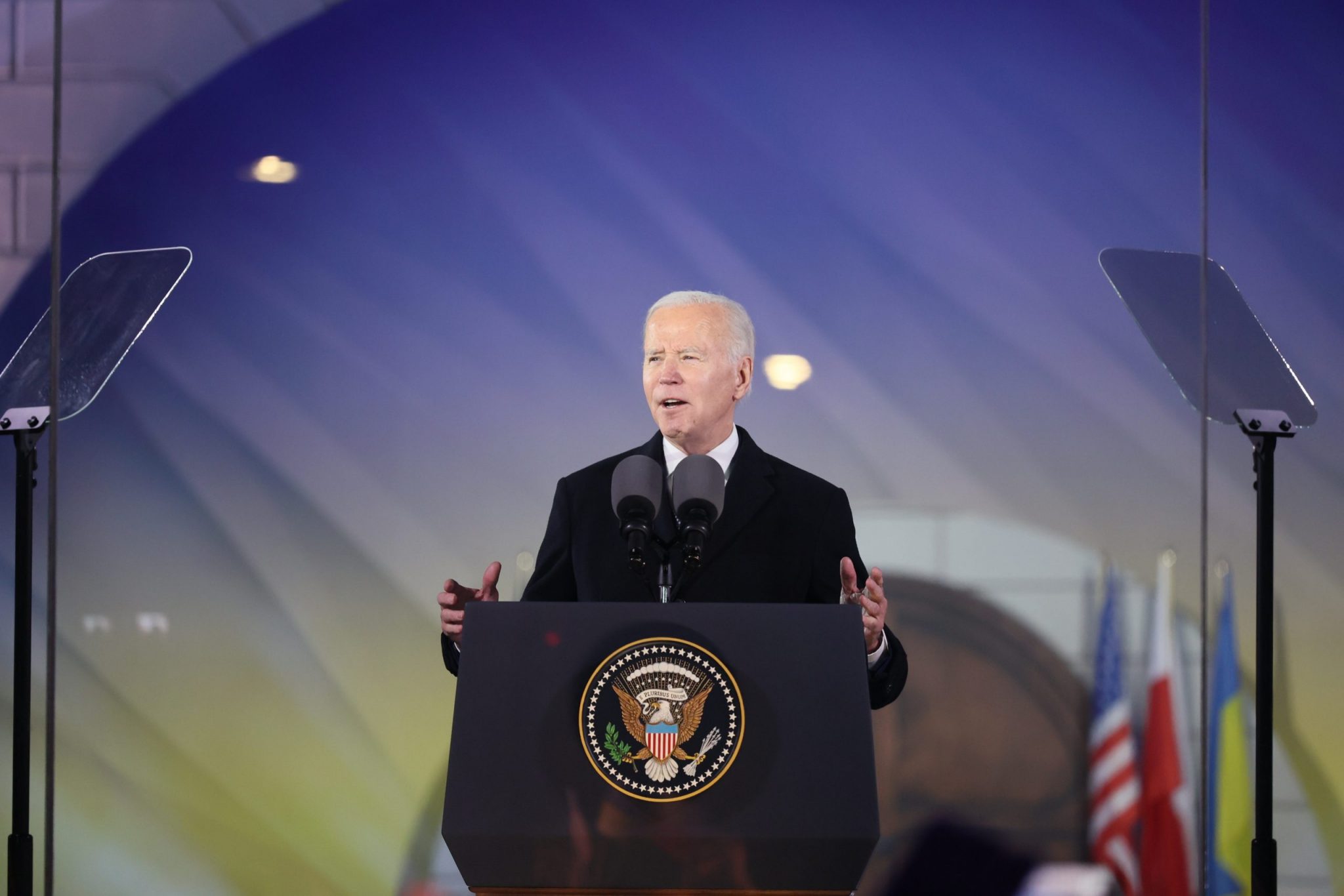US President Joe Biden’s Ukraine, Poland, and NATO meetings last week in the run up to the one-year mark of Russia’s attack on Ukraine was historic—and effective. He shored up support among Ukraine’s allies, undercut adversaries abroad and critics at home, and further established what it will take to win the war and rebuild Ukraine in its aftermath.
This political and geopolitical momentum is essential and must be maintained throughout this second year of war. The challenge of keeping Western political leaders on board may well become even more dicey in the months ahead—not least because Biden’s most prominent domestic political opponents may refuse to support Ukraine as US leadership in rallying the world behind Ukraine translates into a political asset for Biden.
Day One: The Ukraine Trip
The noble tradition of US presidents traveling to the Eastern flank of the free world, where they give voice to the values and resolve of Western democracies, goes back to visits to Germany by John F. Kennedy in 1963 and Ronald Reagan in 1987. Biden has now joined that historic panoply in the country that has replaced Germany as the border land between East and West: Ukraine.
In Kyiv, Biden recalled the night of the invasion a year prior, when he spoke with Ukrainian President Volodymyr Zelenskyy, who could hear explosions in the background. In that call a year ago, Zelenskyy asked Biden to “gather the leaders of the world, and ask them to support Ukraine,” before Zelenskyy signed off by cautioning Biden that he did not know when they’d be able to speak again. Biden’s message in Kyiv was that “one year later, Kyiv stands and Ukraine stands. Democracy stands. The Americans stand with you, and the world stands with you”.
Biden’s promise last week that “we’re going to be with you … for as long as it takes” was powerfully illustrated by the images of him walking with Zelenskyy as air raid sirens blared. In that way, Biden went even further than any other modern presidents by being the first to travel into a war zone not controlled by the US military.
Day Two: The Dueling Speeches
On his second day on the ground in Eastern Europe, Biden’s job was to maintain morale across the alliance. As with his visit to Kyiv, he did that effectively with his speech in Warsaw, stating in unequivocal terms that US support for Ukraine “will not waver”. He pulled that theme of unity among the world’s democracies all the way through his speech, describing the early days of the war as a battle in which “all democracies were being tested”, not just Ukraine’s. Most importantly, he stated clearly that the United States and its allies “will continue to have Ukraine’s back” and that despite the “hard and bitter days” ahead, “we will not tire.”
Russian President Vladimir Putin had to say something to respond to Biden’s visit to Kyiv and remarks in Warsaw, and he didn’t have many options. Putin’s forces are so incapable of pushing back the Ukrainian military that it has instead targeted civilian infrastructure. His story about why he invaded—which has been debunked by strategic classification and rejected by unified diplomacy since day one—would be laughable if not used to justify crimes against humanity. So to get attention, Putin threatened to withdraw from the New START treaty. It was a clear display of weakness.
Day Three: NATO Solidarity
On the third significant anchor of this visit, Biden, alongside NATO Secretary General Jens Stoltenberg, sat down with leaders of the Czech Republic and the rest of the “Bucharest Nine”—the countries that represent NATO’s eastern front. Biden commended their vital importance to the protection of democracy as “the frontlines of our collective defense” and reaffirmed the United States’ commitment to defend “every inch” of NATO territory.
We must not underestimate the importance of this face-to-face diplomacy with these leaders. That is why every president seeks these kinds of opportunities to meet. When former US President Barack Obama visited Prague in 2010, he hosted a dinner with a similar assemblage of eastern European allies in the ambassador’s historic residence (where one of the authors, Eisen, would later live). Engaging in this kind of retail diplomacy is powerful and helps to keep alliances together. That is why Obama did it, and it is why US President Franklin D. Roosevelt and UK Prime Minister Winston Churchill and their advisors traveled repeatedly, at great personal risk, to meet with Soviet Union leader Joseph Stalin in Yalta and in Tehran during World War II.
The One Year Mark: Political Solidarity
This compelling image of US leadership on the world stage is essential to winning over Americans directly at a time when some of their political leaders risk going wobbly for self-interested and partisan reasons.
While most Republican lawmakers support helping Ukraine fight Russia, the exceptions are the most vocal critics and prolific fundraisers who have influence over House leadership, like Rep. Marjorie Taylor Greene (R-Ga.) and Rep. Matt Gaetz (R-Fla.). Similarly, many Republican presidential candidates (or expected candidates) are committed to supporting Ukraine (like Nikki Haley, Mike Pence, Mike Pompeo, etc.), but the two front-runners, Florida Governor Ron DeSantis and former President Donald Trump, are not. This split will probably become more divisive and prominent as the Republican primaries get started over the summer—around the same time as appropriated aid for Ukraine runs out and the debt ceiling reaches default risk. Seeing these domestic opponents mobilize ahead of this political struggle, Biden’s wartime trip could be seen as a preemptive strike.
If Ukraine and its allies can hang on, Russia will eventually come to the negotiating table. With Ukrainian valor and Western weapons supported by strong US leadership, the former is happening. That means the latter is inevitable. The facts that Biden could make a visit to Ukraine, that the alliance is demonstrating such solidarity, and that Putin responded with such weakness are all signs of what has become clear over the past year: Russia is losing this war. Just as the Soviet Union had to withdraw from Afghanistan and end the Cold War, it will eventually have to admit defeat in Ukraine. It always seems impossible until it happens.
As we head into the second year of the war, the United States must continue to support Ukraine on the military, diplomatic, economic, cyber, and information battlefronts—but it must also begin to focus on the future of post-war Ukraine. We need to start thinking about what a protracted war and reconstruction means for Ukraine and its allies. It is important that we get reconstruction right, and now is the time to strengthen the institutions needed for what will be a massive, and likely historic, reconstruction effort. And we need to maintain broad political support for an enduring struggle, which to take two examples, made the ultimate difference for the United States in the outcomes of the Cold War versus the Vietnam War.
Biden’s historic trip injected an essential boost to the political and geopolitical momentum that will be needed to make good on his pledge to stand by Ukraine for as long as it takes—and thereby rally the democracies of the world to freedom’s cause. The solidarity that was on display will need continued cultivation and investment in the months ahead.
The views expressed in GMF publications and commentary are the views of the author alone.






